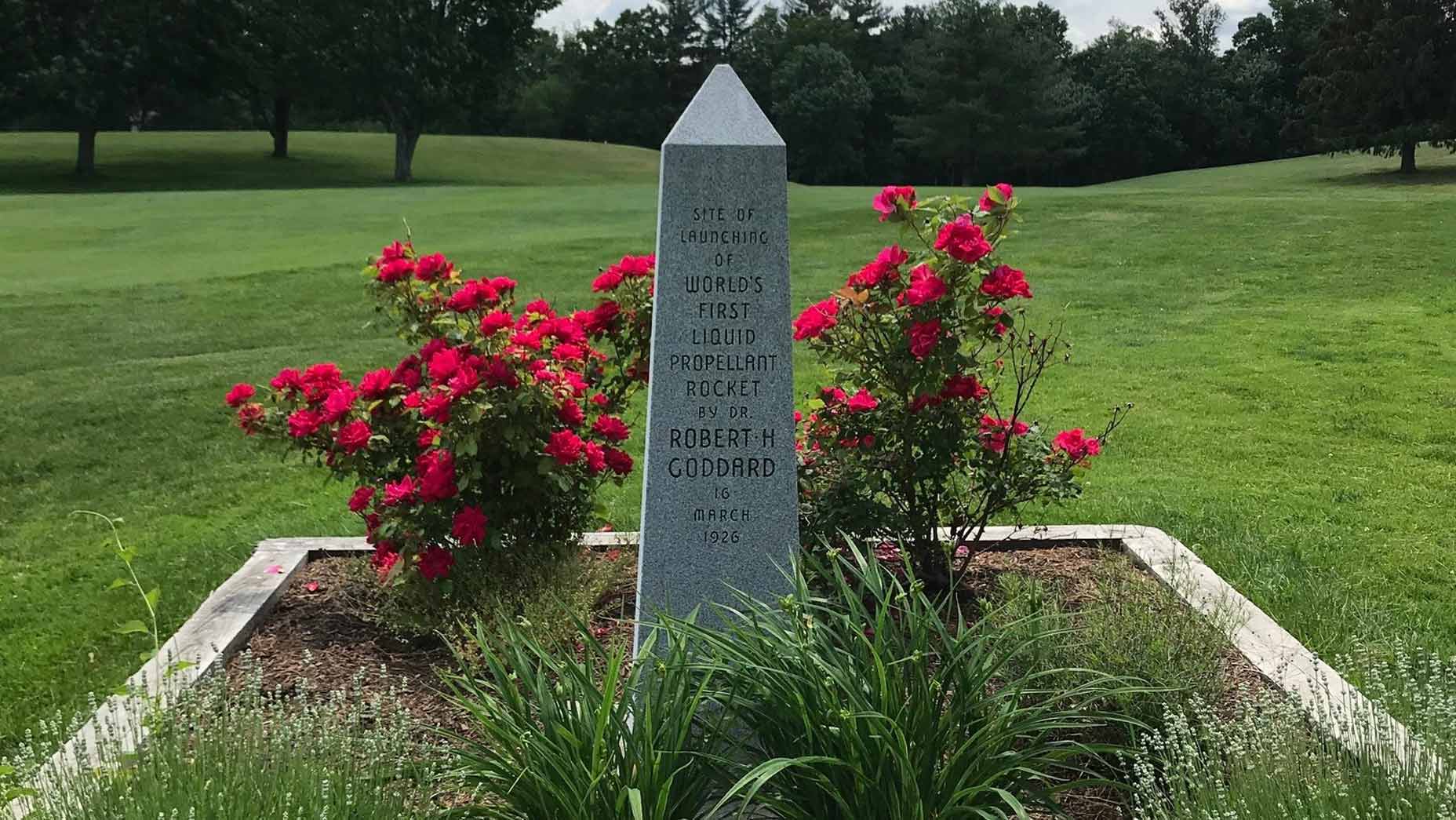Golf isn’t rocket science, but its ties to that sophisticated field run deep.
For decades, golf-equipment makers have drawn on advances in aerospace to build lighter, faster clubs and farther-flying balls. The headquarters of the major manufacturers are filled with Phd-holding Poindexters, many of them former NASA and Boeing engineers. It’s no wonder, really. Projectiles are projectiles, subject to the same laws of physics, whether they’re flying down the fairway or through the stratosphere.
The golf/rocket link doesn’t end there, either.
As evidence, we give you Pakachoag Golf Course, a 9-hole muni in Auburn, Mass. At this wintry moment, the course is partly covered in snow, closed for the season. But when clubhouse manager Kathryn Ryan looks out on the property, she says she’s treated to the same sight she sees all year: an engraved granite obelisk, rising from the ground along the 9th hole. Situated near the irrigation pump station, the monument memorializes a long-ago feat by Robert Hutchings Goddard, who wasn’t a golfer.
You’ve heard of the Goddard Space Flight Center? It’s named after him.
Born in 1882, Goddard is widely regarded as the father of modern rocket propulsion. Among his nifty modern tricks was to conduct the first successful launch of a liquid-fuel rocket (prior to that, rockets were powered by a powdery substance similar to gun powder). He did so on March 16, 1926, on the very ground where the 9th at Pakachoag lies today. Goddard’s rocket didn’t remain airborne for long. It flew for 2 1/2 seconds at a peak altitude of 41 feet and landed 184 feet from where it started, which is decent for a sand wedge but not great for a rocket. Still, the liquid-fuel part was a big deal. On its website, NASA describes the launch as being “as significant to history as that of the Wright brothers at Kitty Hawk.”
At the time of the launch, the land was not given over to a golf course. It was a farm, owned by a family that went on to build the course in 1939. In 1966, the site was declared a National Historic Landmark. In 1981, the town of Auburn bought the course and has owned it ever since.
Like most munis, Pakachoag attracts a lot of regulars, locals who’ve been playing the course for years. Most are aware of the monument and the history behind it, clubhouse manager Ryan says. It’s a quiet point of pride, part of the landscape, so much so, Ryan says, “that golfers sometimes hit it accidentally with their shots.”
Otherwise, no one makes a big deal out of Pakachoag’s claim to fame. There are no annual tournaments or events held in Goddard’s honor, though with the 100th anniversary of the launch approaching in two years, that might change, Ryan says.
You never know. As Goddard himself once famously remarked, “It is difficult to say what is impossible, for the dream of yesterday is the hope of today and the reality of tomorrow.” Sounds like a good mantra for a golfer.
Not that golfers tend to talk that way. Every now and then, Ryan says she overhears players on the first tee say things such as, “Watch this — I’m going to launch one of my own here.”
As in rocketry, that’s easier said than done.
